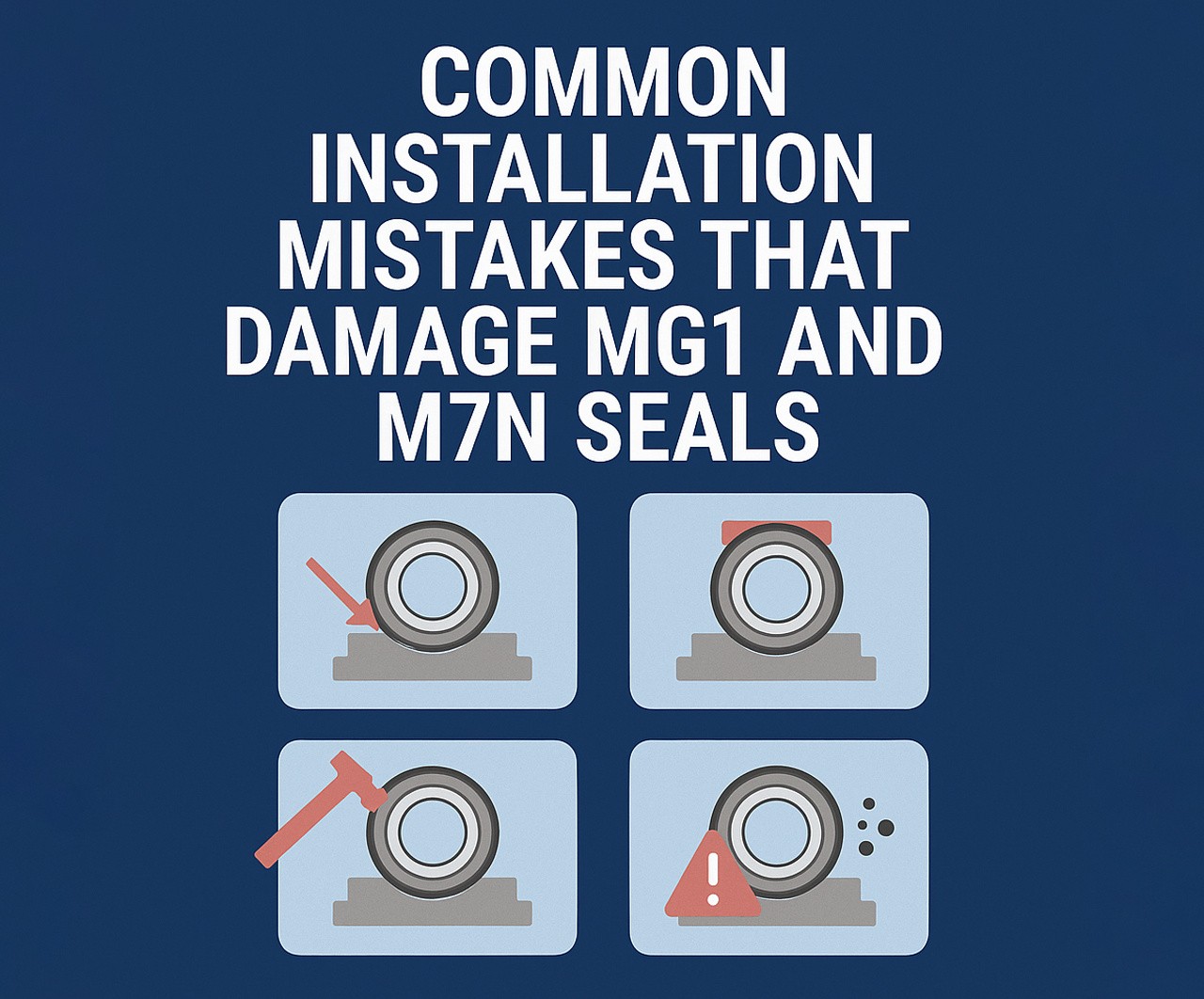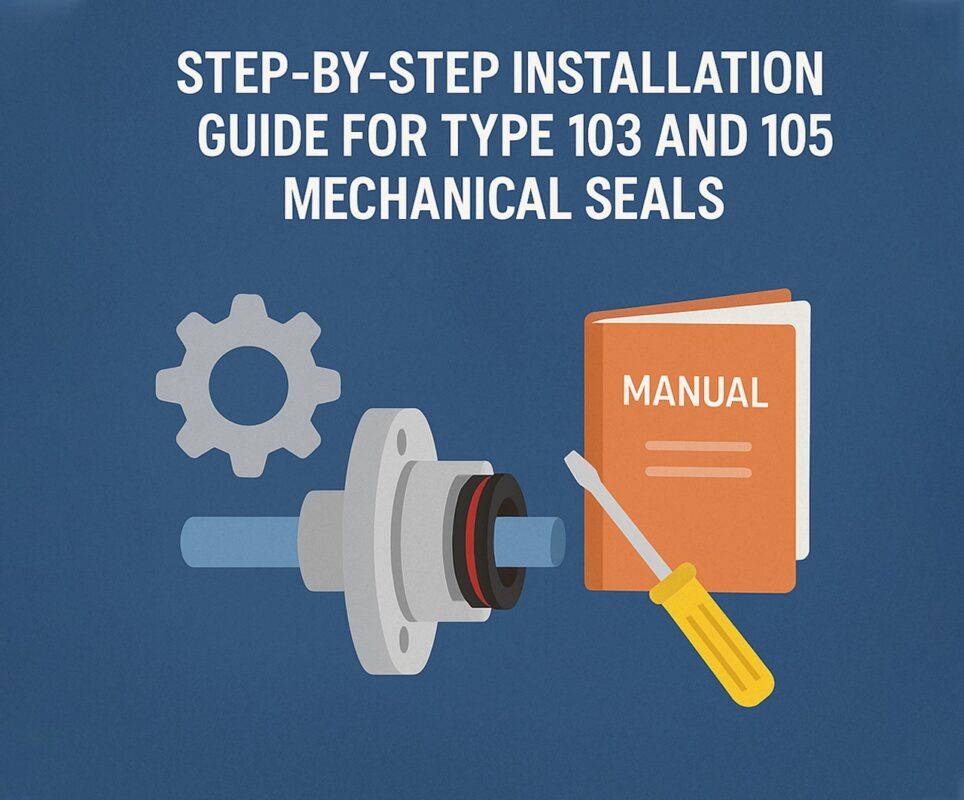When it comes to ensuring mechanical seal reliability, proper installation is non-negotiable. MG1 and M7N seals are popular in pumps, mixers, and rotating equipment due to their robust design and versatility. However, even the best-designed seals can fail prematurely if installed incorrectly. Interestingly, much like the delicate balance in ecosystems housing the arctic seal, harbour seal, and nerpa seal, the precision required in seal installation is easily disrupted by small mistakes. These common errors not only jeopardize system integrity but also result in expensive downtimes and recurring maintenance costs.
In this article, we’ll highlight the most common mistakes made during the installation of MG1 and M7N mechanical seals—and how to avoid them. This guide will serve both maintenance engineers and equipment operators who want to extend seal life, ensure safety, and minimize repair costs. Know more..
Understanding MG1 and M7N Mechanical Seals
Before we dive into the pitfalls, let’s briefly recap what makes MG1 and M7N seals unique.
- MG1 Seals: Standard mechanical seal design suitable for a wide range of liquids. Often used in clean water and chemical processing systems.
- M7N Seals: A variant of MG1 with enhanced features, including better shaft alignment accommodation and temperature resistance. Frequently found in HVAC, pharmaceutical, and food-processing systems.
Both rely on precise axial positioning, shaft surface condition, and secondary seal integrity. Any disruption to these factors—much like how environmental changes affect arctic seal, harbour seal, and nerpa seal populations—can dramatically affect performance.
Mistake 1: Incorrect Shaft Surface Preparation
What Happens:
- Improper cleaning or polishing leaves residue or damage that interferes with seal movement.
- Surface irregularities can lead to leaks and premature wear.
How to Avoid It:
- Use non-abrasive materials for shaft cleaning.
- Ensure shaft roughness is within manufacturer specs (usually Ra 0.2–0.4 µm).
This mistake is like introducing pollutants into the habitat of a harbour seal—the environment becomes hostile to long-term stability.
Mistake 2: Using the Wrong Lubricant or None at All
What Happens:
- Excessive friction during installation can damage O-rings or elastomers.
- Using petroleum-based lubricants on EPDM seals causes swelling and degradation.
How to Avoid It:
- Always consult manufacturer-recommended lubricants.
- Use water-based lubricants for EPDM or compatible silicone grease for Viton.
Just as the survival of the nerpa seal depends on its icy environment, seal materials rely on proper lubricant compatibility to survive installation.
Mistake 3: Over-Compressing the Seal
What Happens:
- Incorrect axial positioning leads to excessive spring load.
- This accelerates face wear and causes early leakage.
How to Avoid It:
- Always use spacers and alignment tools.
- Refer to manufacturer specs for compression limits.
Think of it like overpopulating an ice floe with arctic seals—too much pressure compromises structural integrity.
Mistake 4: Contaminated Sealing Faces
What Happens:
- Fingerprints, dust, or grease compromise sealing surfaces.
- Results in hot spots and uneven wear.
How to Avoid It:
- Always handle seal faces with gloves.
- Clean with lint-free wipes and pure alcohol.
Contamination can be as disastrous to a seal as oil spills are to a harbour seal colony—unseen, yet utterly destructive.
Mistake 5: Misalignment of the Shaft and Seal
What Happens:
- Off-center installation leads to wobble and vibration.
- This misalignment ruins seal faces and weakens the entire assembly.
How to Avoid It:
- Check shaft runout and concentricity before installation.
- Use dial gauges for precision.
Alignment precision is critical—just like nerpa seals require precise ice patterns to navigate, seals need straight, balanced shafts to function properly.
Mistake 6: Ignoring Temperature and Pressure Ratings
What Happens:
- Excess heat or pressure can cause blistering, hardening, or cracking of seal faces and O-rings.
- Seal fails catastrophically under overload.
How to Avoid It:
- Verify that your MG1 or M7N seal is rated for the system’s thermal and hydraulic conditions.
- Use cooling systems or pressure reducers if needed.
The way climate change endangers the arctic seal, wrong operating conditions endanger seals designed for specific environments.
Mistake 7: Using Aftermarket or Poor-Quality Components
What Happens:
- Substandard materials wear out quickly or are incompatible with operating fluids.
- Dimensions may be off, resulting in installation difficulties.
How to Avoid It:
- Stick with trusted OEM components.
- Validate material certifications before use.
Seal reliability is like the delicate food chain that supports a harbour seal ecosystem—remove one link, and the whole system collapses.
Mistake 8: Failing to Condition the Pump Before Operation
What Happens:
- Dry running causes immediate face damage.
- Thermal shock from sudden startup leads to cracking.
How to Avoid It:
- Pre-fill the pump with fluid.
- Rotate the shaft manually before starting.
Like releasing a nerpa seal into warm water—it’s a shock they’re not built to handle. Your seal deserves a stable startup.
Mistake 9: Overlooking Installation Orientation
What Happens:
- Installing components backwards or upside down causes improper engagement.
- Misplacement of anti-rotation pins or springs prevents proper sealing.
How to Avoid It:
- Follow assembly diagrams closely.
- Cross-check parts orientation at each step.
Mechanical seals have zero tolerance for human error, much like how arctic seal pups have no defense without their ice platforms.
Mistake 10: Rushing the Installation Process
What Happens:
- Missing small steps leads to big problems later.
- Skipping checks means hidden issues go unnoticed.
How to Avoid It:
- Set aside dedicated time for seal installation.
- Use a detailed checklist.
Precision takes time. Skipping steps is like rushing a seal pup away from its mother—results are rarely good.
Bonus Tips for Successful MG1 and M7N Seal Installations
- Store seals in clean, dry environments – Avoid exposing them to UV, dust, or temperature swings.
- Inspect every component – Don’t assume parts from the box are ready to install.
- Keep spare seals on hand – Especially in operations where downtime is costly.
Your seal installation success rate is directly tied to discipline and attention to detail.
Final Thoughts
MG1 and M7N seals are engineered to perform reliably, but only when installed with care and precision. Just as the survival of the arctic seal, harbour seal, and nerpa seal depends on a delicate environmental balance, the performance of your mechanical seal depends on proper handling, alignment, and environmental compatibility.
Avoiding these common installation mistakes can drastically increase seal life, reduce maintenance costs, and improve operational safety. Whether you’re managing a food processing line or a water treatment pump, smart installation practices pay off in every rotation.



